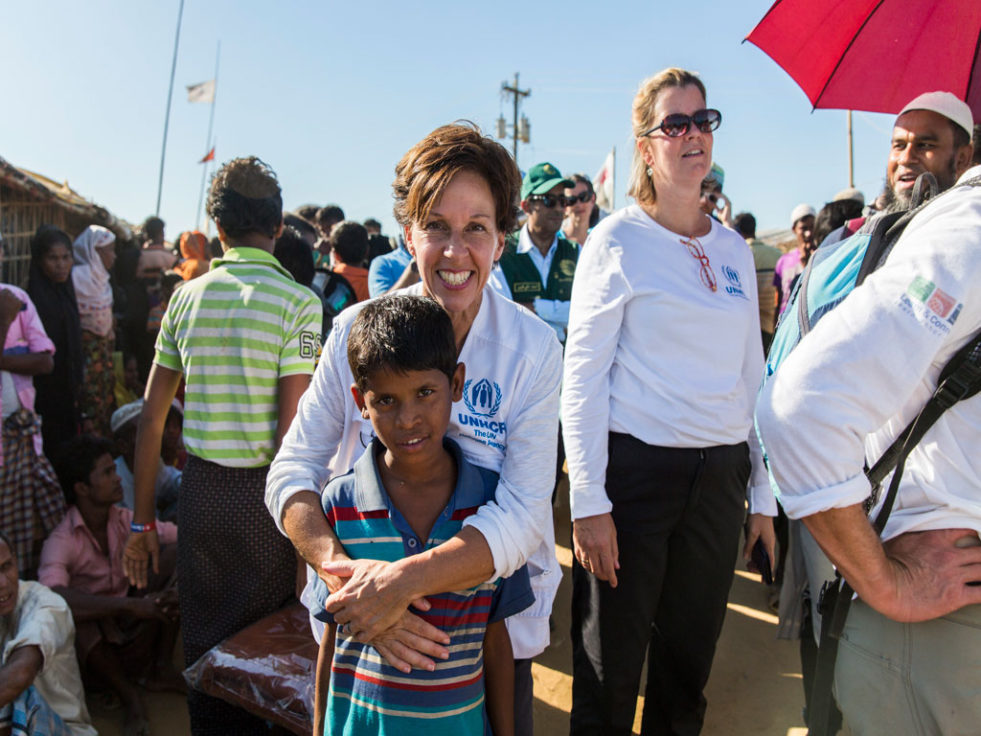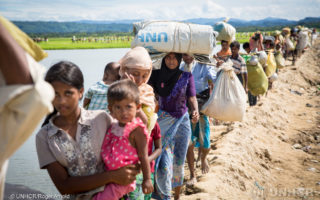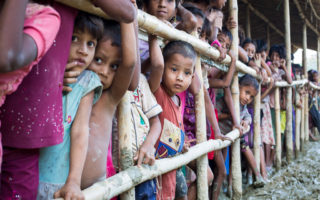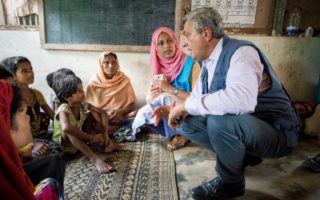
Louise Aubin embraces a boy as she meets with refugees at Kutupalongn camp. ©UNHCR/Andrew McConnell
By Louise Aubin, as told to Fiona Irvine-Goulet
Louise Aubin is the Deputy Director for International Protection at UNHCR’s headquarters in Geneva. The Quebec native is a lawyer who has been with UNHCR for over 20 years, beginning in 1995 as a legal officer for UNHCR Canada, and then working in the Central African Republic, Rwanda, France, Guinea, Ethiopia, and Kenya. She describes her career as a time of discovery and of powerful experiences, meeting some of the most resilient and inspiring people in the world, both refugees and the people who protect them.
Tell us why you are in Bangladesh.
I am leading UNHCR’s emergency response in Bangladesh for Rohingya refugees. Within days after violence erupted in late August of 2017, we witnessed some 15,000 refugees crossing the Myanmar-Bangladesh border each day. Over 600,000 refugees, more than half of whom are children, have arrived in the Cox’s Bazar region of Bangladesh, most having experienced or witnessed horrific acts of violence.
So many refugees look deeply traumatized. They are searching for surviving family members; children have been separated from their parents; some people still wonder whether their father, siblings or children are alive and have had a chance to safely reach Bangladesh.
What are you doing there?
I’m leading about 200 UNHCR colleagues originating from multiple countries, including a talented team of Bangladeshi UNHCR staff. We have specialists ensuring that appropriate emergency services are made available to all refugees upon arrival, including shelter, sanitation facilities, medical assistance and psycho-social support, immediate medical help, tracing of missing family members, and critical information on what options are available for settling in Bangladesh. We do this in collaboration with several UN agencies and non-governmental organizations. It’s such a privilege to have this opportunity to help and be part of such a talented and dedicated UNHCR team in an international effort to keep Rohingya refugees safe.
What is it like?
The conditions here are taxing: the climate, the terrain, and the emotional strain of interacting with people who’ve suffered so much horror. One can easily feel overwhelmed and powerless to address the needs of hundreds of thousands of people. But the Rohingya are incredibly resilient. In fact, a massive settlement was built within weeks by the very refugees who now inhabit the area, despite having arrived with nothing but the clothes on their backs.
Canadians have given generously to the crisis. What is the impact of the donations received so far?
Donations have allowed UNHCR to fly in 15 humanitarian airlifts carrying 1,500 metric tonnes of emergency life-saving relief items and shelter materials. So far, more than 20 schools in both Kutupalong and Nyapara settlements have been reopened and are running, helping thousands of refugee children to resume a semblance of normal life.
With malnutrition levels higher than emergency thresholds, UNHCR has established nine nutrition centres and two in-patient treatment centres for the management of acute malnutrition. With our partner agencies, we have been providing high-energy biscuits and hot meals to the newly arriving refugee families, and are also working with refugee volunteers to set up community kitchens to meet the growing needs.
The lives of hundreds of thousands of refugees have been saved and this response was made possible because of the people of Bangladesh—the real front-line responders in this emergency. Without the help of our partners and donors, the staggering needs cannot be met.
For more information on the Rohingya refugee crisis and how you can help, please visit unhcr.ca/bangladesh





